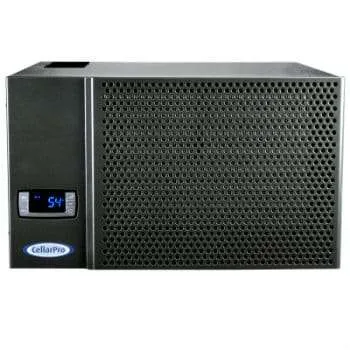Creating and maintaining the ideal environment in your wine cellar is essential for preserving the quality and flavor of your wine collection. Temperature control is one of the most crucial factors in wine storage, as fluctuations can lead to spoilage. Here’s a guide on how to keep your wine cellar cool and ensure your wines age gracefully.
1. Invest in a Quality Cooling System
The most effective way to maintain a consistent temperature in your wine cellar is to install a dedicated wine cooling system. Unlike standard air conditioning units, wine cooling systems are designed to maintain the ideal temperature range (typically between 45°F and 65°F) and humidity levels required for wine storage. Choose a wine cooling system that is appropriately sized for your cellar’s dimensions to ensure even cooling throughout the space.
2. Proper Insulation
Good insulation is key to keeping your wine cellar cool and reducing energy costs. Insulate the walls, ceiling, and floor of your cellar with materials such as closed-cell foam or fiberglass to prevent outside temperatures from affecting the internal climate. Additionally, install a vapor barrier to protect against moisture, which can lead to mold and mildew.
3. Seal Doors and Windows
Ensure that the door to your wine cellar is tightly sealed to prevent warm air from entering and cool air from escaping. Consider using an insulated, exterior-grade door with weather stripping for added protection. If your cellar has windows, make sure they are double-paned and sealed, or consider eliminating windows altogether, as they can be a source of heat.
4. Monitor Temperature and Humidity Levels
Regularly monitoring the temperature and humidity levels in your wine cellar is essential to ensure that the environment remains stable. Invest in a quality thermometer and hygrometer, or opt for a digital monitoring system that alerts you if conditions fall outside the optimal range. Maintaining humidity levels between 50% and 70% is also important, as too much moisture can damage labels and corks, while too little can cause corks to dry out, leading to oxidation.
5. Minimize Heat Sources
Reduce the number of heat sources in your wine cellar to help maintain a cool environment. This includes minimizing lighting, as even small amounts of light can generate heat over time. Use LED lights, which emit less heat than traditional bulbs, and ensure they are turned off when not in use. Additionally, avoid placing electronic devices, such as dehumidifiers or security systems, in the cellar itself, as they can generate heat.
6. Position the Cellar in a Cool Area
If you’re in the planning stages of building a wine cellar, consider its location carefully. Positioning your cellar in a naturally cool area of your home, such as a basement, can reduce the workload on your cooling system. Avoid placing the cellar near heat sources like boilers, kitchens, or areas with direct sunlight.
7. Regular Maintenance
Finally, regular maintenance of your wine cooling system and cellar environment is essential to keeping your wines in perfect condition. Schedule annual check-ups for your cooling unit to ensure it’s functioning correctly and clean the system’s filters regularly. Additionally, check for any signs of wear or damage to insulation, seals, and barriers, and address any issues promptly.
Conclusion
Maintaining a cool, stable environment in your wine cellar is crucial for preserving the integrity of your wine collection. By investing in the right equipment, ensuring proper insulation, and regularly monitoring conditions, you can create the ideal storage space for your wines to age gracefully over the years.






